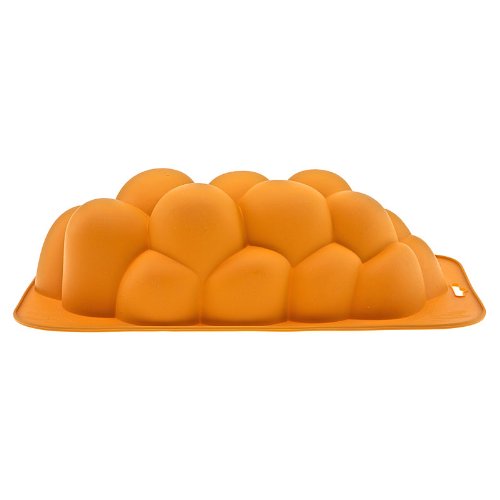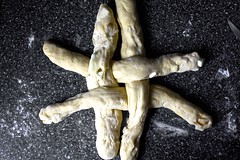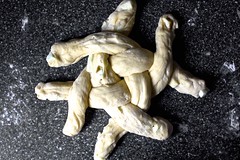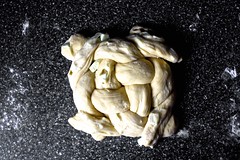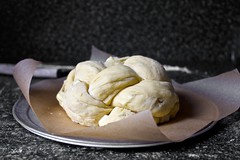1. If the theory of Evolution is right, the newer generations will not grow teeth. We're not chewing any more!!! Between the Vitamixes and all the other power blenders of the world, the smoothie and juice joints and services, the ubiquitous frozen yogurt places,* the fancy nut and seed butters, and all those squeezable pureed foods that started for babies and now make products for every age, we can seriously let go of our pearly whites. Why don't we want to chew any more? Is this the New Fast Food? What do you think?
*According to my observation-based pseudo scientific research, there are now more froyo stores in Manhattan than nail salons, and that's a pretty shocking stat!!!
2. Sorry, but not only gluten is out, but grains (and sugar...duhhhh) in general are being blamed for causing a lot of disease. In his best selling book Grain Brain: The Surprising Truth about Wheat, Carbs, and Sugar--Your Brain's Silent Killers, neurologist David Perlmutter, MD holds grains responsible for a lot of our current scariest diseases such as dementia, ADHD, anxiety, chronic headaches, depression, etc. Just add this to the highly popular Primal/Paleo diet and digestive SCD and GAPS protocols, and the picture isn't looking that bright for whole grains.This means good news for nuts and seeds used ground as flour substitutes, and I foresee an abuse on those too until they are blamed for something else. I'm not ready to bid farewell completely to my whole grains yet, but if I owned Kellogg's stock, I would sell (although I should keep at food/nutrition advice and avoid financial ones that I don't really understand).
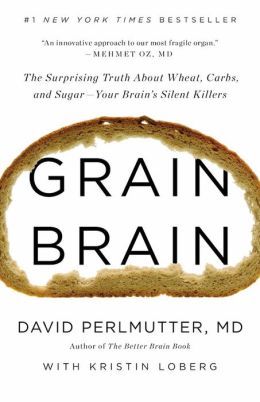
3. The "it" cuisines are from the South. All the way down to the Andes and the Amazon (the region, not the estore, although I'm sure that's where you can purchase the majority of the ingredients). Peru is the place to go and to purchase from. It started with quinoa, but it hasn't stopped there. Inca superfoods like maca, lucuma and camu-camu and the sweetener yacon are going to keep making their way into our hearts (via smoothies), and I'm betting on kaniwa to become the newest it grain (which is actually a seed). I just hope we get to do it through fair trading and the locals getting something worth in exchange, as we've already taken all their quinoa...According to Vogue, "the latest detox vacations are taking place not only off the beaten track but well above it," with high altitude treks on the Inca Trail. The other place whose ingredients we'll keep getting to know is Brazil. This huge country (which is actually hosting back to back the World Cup and the Olympics, so we'll be learning a lot about it via the media) has unbelievable produce, many with incredible nutritional value that has only been started to get promoted in these latitudes. We already know about acai, but I believe produce with rhythmic names like umbu (high in disease preventing polyphenols), pitanga (with suggested anticancer and anti inflammatory properties), caju and many others, will eventually make it into the American market, labeled as superfoods. Award winning chef, Alex Atala recently published D.O.M.: Rediscovering Brazilian Ingredients, a beautiful coffee table book with foods you didn't even know existed. It's a wonderful eye candy (I wouldn't even dream attempting any of the recipes) and introduction into the exotic foods of Brazil.
 |
| Image from D.O.M.: Rediscovering Brazilian Ingredients (caju) |
4. The "it" sweetener is now yacon syrup, which is extracted from the yacon tuber from...Where else? Peru. I had been wanting to write about it for many months, but Dr. Oz had it on his show before I got to do my post, and by highlighting some weight-loss properties from the sweetener, the already hard-to-find syrup, completely vanished from the shelves and the web (unless you're willing to pay like $40.00 plus shipping for a minuscule amount). Yacon is low glycemic, tastes like a cross between molasses and maple syrup, has 50% less calories than sugar, and it's highly concentrated in inulin--a type of fiber that breaks down into fructooligosaccharides (FOS), which are prebiotics (feed the good gut bacteria). Yacon contains potassium, calcium, phosphorous, iron and some amino acids. Just a warning (if you are ever able to get a hold of it): that same wonderful inulin, is also present in Jerusalem artichokes (which I love), and if you've ever had those, you might have realized that they can make you really gassy. So no yacon syrup before a business meeting or a first date!
5. Cultured foods--My most fave topic, so I'll try to keep it short. For a longer spiel, read here. Although there's much more research to be done ahead, keeping out gut microorganisms happy and abundant is essential for good health, not only digestive, but general health, from brain to skin. Small pickling shops have been popping up everywhere in Manhattan, and that is a fabulous trend. When purchasing sauerkraut, kimchi, kvass, or any other pickled vegetables, look for unpasteurized ones that have no vinegar (both kill those bacteria that we need to eat/drink) and no preservatives nor other artificial additives. Dairy kefir and water kefir have been increasing in the market as well, which is excellent news (especially for my son, whose main source of food is kefir). However, my strongest bet goes to COYO. What? You might ask...It stands for coconut yogurt. Made by pureeing (again, the trend I listed under 1.) the meat and water of fresh coconuts and then culturing the blend with yogurt or kefir cultures (microorganisms), slightly sweetened and some times even flavored, I expect to start seeing it EVERYWHERE within the next year.
 |
| Recipe and image from: http://www.rawfoodrecipes.com/recipes/young-coconut-yogurt.html |
6. Despite Mayor Bloomberg's efforts to forbid the sale of gigantically-huge-humongous sweetened drinks--that are undeniably bad for anyone--the industry seems to be getting it its way. But not without a fight. I applaud The New York City Health Department's TV and subways placard ad campaign against soda, sports drinks, teas and energy drinks.It's just so easy to inadvertently gulp down huge amounts of sugar without even noticing. I'm glad they are trying to educate people about it!

7. BPA-free canning. Eden organic has been doing it for a while with their beans, but other food companies such as Crown Prince Natural (canned wild fish) and Farmer's Market (vegetable purees) are joining in lining their cans BPA-free. What is BPA? Short for bisphenol A is an industrial chemical used to make certain plastics and resins since the 1960s. BPA is found in polycarbonate plastic containers (often used for storing food and beverages) and epoxy resins are used to coat the inside of metal products, such as food cans, bottle tops and water supply lines.Research has shown that BPA can seep into food or beverages. Exposure to BPA is a concern due to possible health effects on the brain, behavior and prostate gland of fetuses, infants and children and fertility issues in adults.Therefore, it's a good thing that if you consume canned products and/or use plastic containers, that you purchase the ones labled BPA-free.
8. It's been a juicy year for celebrity chef scandals. I guess it all comes with the territory, however, I do hope Nigella Lawson goes to rehab, puts her personal and professional lives back together and keeps showing up on TV and writing wonderful cookbooks that turn recipes into experiences I want to go through. I can't help it, ever since How To Be A Domestic Goddess many years ago, I've been a big fan.
9. "Healthy Eating" is IN and vegetables are cool. The once-blah-now-superhip Bon Appetit magazine has done a great job promoting them.
 |
| Photo by Carin Olsson for Bon Appetit |
10. Here, here and here are some lists of the best cookbooks of 2013. However, the ones I personally used the most are:
-Gwyneth's It's All Good
-Kim Kushner's The Modern Menu
-Yotam Ottolenghi and Sami Tamimi's Ottolenghi: The Cookbook (although this book was a re-launch not really a 2013 release)
- Estee Kafra's Cooking Inspired
Ingredients
2 cups organic raw nuts (almonds, cashews, walnuts, Brazil, macadamia, hazelnuts, unsweetened shredded coconut, etc) or seeds (pumpkin, hemp, sunflower seeds, sesame, etc)
4 cups water (plus more for soaking the nuts and rehydrating dates)
10 pitted dates (or raw honey, yacon or pure maple syrup or coconut nectar)
1 vanilla bean (or 2 teaspoons pure vanilla extract, but I recommend the bean)
1/8 teaspoon sea salt
Optional: mesquite flour, ground cinnamon, cardamom, allspice, ground ginger
Method
- Place the nuts/seeds in a container and cover them with fresh water by 2 inches. Cover and refrigerate overnight. If using cashews, soak between 2 and 4 hours. In a separate container, soak dates in water overnight.
- Drain nuts and dates and rinse them in fresh water.
- Place nuts, dates and 4 cups fresh water in a blender and blend until smooth. Time will depends on your blender.
- Split the vanilla bean lengthwise and scrape the seeds with the back of a knife into the nut/seed-water mixture. Add salt and spices, if using, and blend again.
- Set a large bowl with a fine mesh strainer/sieve on top* and pour the blended liquid into the strainer, pressing with the back of a spoon to extract more liquid.
*If you want a completely smooth mylk, line the strainer with cheese cloth.
- Voila! Refrigerate and enjoy!






